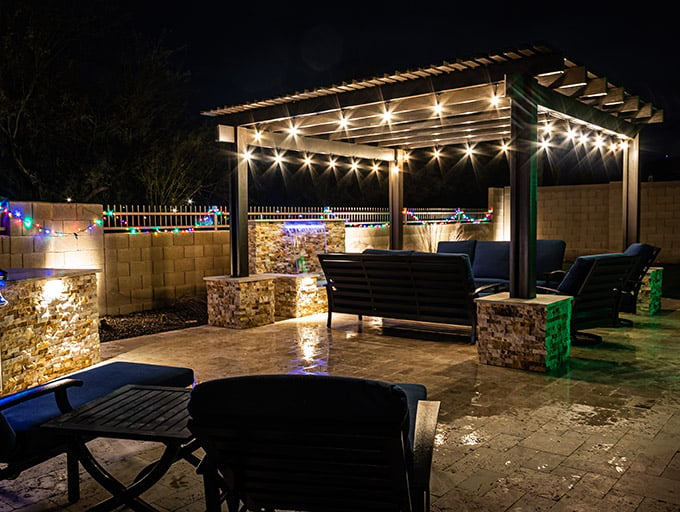How to Improve the Quality of Life in Your Community

Contents
“Quality of life” is a phrase we’ve all heard before. And it certainly sounds good in theory.
For example, we know those cities on the “Best Places to Live” lists must have it.
But how many of us have broken down what it really means to rank for “high quality of life?”?
What if, as we understand the term better, we find out our local area is lower on the scale than we thought? Would that mean, gulp – reduced satisfaction or more work for us in our neighborhood?
The good news is there are simple keys to improving the quality of life in your community. The first step is making sure you understand the concept thoroughly.
What does “high quality of life” mean?
Quality of life is a subjective measure of well-being that’s not precisely defined.
Popular discussion of the term began with 20th-century health care, as breakthroughs in medicine extended the average lifespan. Doctors began to consider life quality, versus simply keeping people alive for as long as possible.
In the 21st century, Merriam-Webster defines quality of life in two ways. First, it's the "overall enjoyment of life: general well-being." Secondly, it's "the degree to which a person or group is healthy, comfortable, and able to enjoy the activities of daily living."
One promising theory of quality of life extends on this idea of ability as it talks about “capabilities." The Berkeley Well-being Institute describes this as "the extent to which you have the choice to live the kind of life that you want."
So, a high quality of life in a city means lots of affordable options and choices - ones that residents are generally able to take advantage of.
We can then define a city’s quality of life as characteristics that are supportive of well-being. These qualities make choosing a richly varied and healthy lifestyle easy for citizens.
Community indicators of high quality of life
There is no one precise index for quality of life nor one recipe for improving the quality of life in your community.
That said, many of us have a kind of general sense of what it entails. And each year we eagerly check the Best Places to Live lists put out by US News and World Report and Livability.com to see if our local areas make the cut!
Here we'll focus on Livability.com's rankings and criteria. For one thing, they focus on mid-sized cities where it’s simply easier to get a snapshot of a smaller area and what makes it special. (Compare that with trying to analyze a large city with so many different neighborhoods like D.C or Boston!)
Plus, smaller cities seem to reflect one of the biggest emerging trends in 2022 – the search for a low cost of living. With rampant inflation and home prices soaring nationally, more people than ever are scouting for an economical place to live!
According to Livability.com, “The research shows that 7 in 10 adults consider affordability a top-three factor influencing a decision to relocate.”
The LivScore
Livability.com's LivScore is derived from more than 50 data points grouped into eight categories:
- Amenities – Healthy lifestyle amenities, such as parks and trails
- Economy – Strong job market with thriving small businesses
- Demographics – Mid-sized cities (generally defined as 500,000 population or smaller)
- Housing – Affordability and availability
- Social and Civic Capital – Engaged networks of citizens, available to make decisions and solve problems
- Education – Educational institutions and opportunities
- Health Care – Hospitals available locally
- Transportation and Infrastructure – Commuting times are a big factor here
Examples of Communities with High Quality of Life Ratings
Here are the 3 communities that rank highest for quality of life in 2022 by Livability.com:
Affordability
The first thing they all have in common is affordability. Again, this is top of mind for most people relocating in 2022. It's the foundation for whether people can take full advantage of an area's other amenities.
Institutions and innovation
The next things all these places have in common are outstanding institutions. Rochester, MN is home to the Mayo clinic. Ann Arbor is home to the University of Michigan and Madison is home to the University of Wisconsin at Madison.
One thing these institutions bring is a love of learning and a spirit of innovation. They help foster an engaged citizenry who stay involved in their communities. Residents of these places tend to have a helpful, civic-minded mentality, and a zest for life.
Locals are often known for things like volunteering to keep art museums open for free. Installing "fairy doors" across town. Or enjoying a culture of indoor and outdoor art.
Their numbers tend to include a healthy mix of long-term locals and transplants.
All these areas boast low unemployment and a mix of different industries. Madison has healthcare, food and beverage, bioscience, information technology, and manufacturing. Rochester has a robust and innovative healthcare sector anchored by the Mayo Clinic. It also has a large IBM facility, plus thriving arts and outdoor scenes.
Ann Arbor features an incubator in the form of the University of Michigan and proximity to a revitalized Detroit. It has the automotive industry, education, healthcare, and manufacturing. It also boasts the presence of tech titans like Google, Duo Security, and Nokia.
Playing up their strengths
All three cities juxtapose the high-tech and outdoorsy, sporty and bookish. They are near larger, dynamic metropolitan areas while not being in them.
Each city is proud of its amenities for a healthy flourishing lifestyle. Ann Arbor is the “Tree City.” Madison is the unofficial bike capital of the Midwest. Rochester, MN touts its art scene.
As remote-friendly places, they each boast dynamic co-working hubs. These cities also have ample green spaces to explore. This includes outdoor recreation areas accessible through the 4 seasons.
Finally, there are affordable places to catch up on happy hour and local culture, such as taverns, restaurants, bookstores, and museums.
How Your Community Could Rank for “Best Quality of Life”
Since there’s no precise index – you get to create your own! You’re free to take inspiration from the examples above and get to work on improving the quality of life in your city.
As you begin, try not to get overwhelmed. Instead, start by breaking down your city into domains. Assess your community’s strengths and weaknesses. And then begin to ask others what they think people could do to improve things in each area.
Then when you're ready, - get some people together. (This is one of the main keys to a high quality of life in and of itself - and it's what makes things fun!)
Gather regularly with others to think about initiatives you could launch:
- What types of amenities would really improve the quality of daily life for people? Is there a process for working with the local government to get some of these implemented?
- What are your area's signature strengths? How can you promote and strengthen these even further?
- Are your local industries taking full advantage of the area workforce? Are there any kind of talent incubator programs you can support?
- Are there free programs put on by local institutions that the public should be more aware of?
- Is there any kind of ongoing discussion around affordability in your area? Are there community programs you can launch or support to help ease area strains?
- What can you do to support small businesses in your area?
- How can you encourage people to gather more?
One good idea that solves for several of the points above is to talk to large and small area businesses about opening up their locations for rental. There are all kinds of creative ideas out there!
What about offering alternative work locations to reduce commuting? Or renting out places by smaller time and space increments to make them ultra-accessible to the public? Opening up coffee shops, barber shops, and bowling alleys for rental? Or promoting local venues for regional events?
As more people mix and mingle in your community, there are increased opportunities for creativity and collaborations - and original ideas!
Remember that engaging with others is at the heart of so many things that are good. The benefits of gathering include community mental health, flourishing small businesses, and of course – quality of life.
Now You Know How to Improve the Quality of Life in Your Community
By putting your heads together with others you can find meaning, joy, and purpose in working together. And that effort itself helps boost the quality of life in your community!
So a big part of the solution—from the beginning of the process to the end—is getting together with others. Do it to socialize, but also do it with constructive goals in mind.
Want an easy and effective way to get people in your area gathering more? Don't hesitate to use software like Spotz to find amazing spaces in your city!



